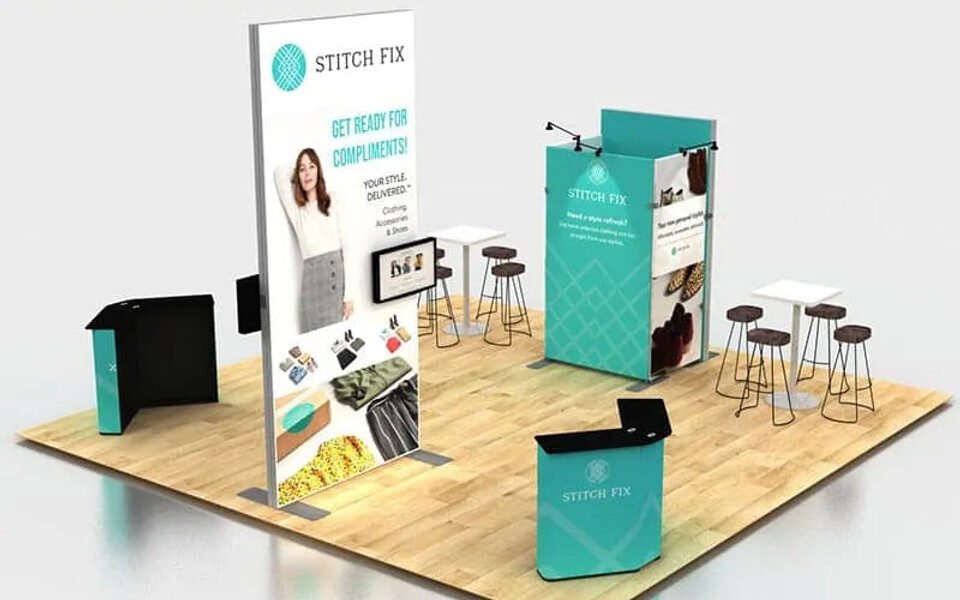Trade shows offer a powerful platform for tech companies to showcase innovations, build connections, and explore emerging trends. However, with the vast opportunities available, it’s easy to get lost without clear goals. Setting specific objectives before attending a trade show ensures you make the most of your time and resources. Hopefully you already have ordered a custom and portable trade show display. Now it is time to set effective goals for your next tech trade show.
Define Your Key Objectives
Before setting goals, clarify what you want to achieve at the event. Tech trade shows are bustling with opportunities, so having a clear focus is essential. Some common objectives for tech businesses might include: networking, lead generation, staying informed on trends and brand awareness. Here are some examples of these specific objectives.
- Connect with industry leaders, potential partners, or customers. Set a goal for how many meaningful connections you want to make.
- Set a target for the number of leads you aim to capture, whether it’s through product demos, meetings, or booth visits.
- Stay ahead of emerging technologies like AI, blockchain, or cloud computing. Identify which trends you want to learn more about.
- Enhancing brand visibility through product demos, social media engagement, or booth interactions.
Set Specific and Measurable Targets
Once you know your goals, make them measurable so you can track your progress. For example:
- Networking: Rather than just “meeting new people,” aim for specific targets like “connect with 20 key industry professionals” or “schedule 10 one-on-one meetings with potential partners.”
- Lead Generation: If generating leads is your focus, set a target like “capture 50 qualified leads for our new software” or “book 15 demo appointments with prospective clients.”
- Research and Trends: If you’re attending to learn, aim for goals like “attend 3 sessions on AI-driven business solutions” or “see 5 demos on cloud technologies.”
- Social Media and Engagement: If brand exposure is a priority, track metrics like “gain 100 new social media followers” or “post 5 event-related updates with a goal of 50 interactions each.”
Having specific, quantifiable targets will help you stay focused and motivated throughout the event.
Create a Strategic Plan
With your goals set, it’s time to plan how you’ll achieve them. A strategy will help guide your actions and ensure you stay on track:
- Networking Strategy: Research the attendee list and identify key people you want to meet. Look for industry leaders, potential partners, and clients. Be prepared with a concise pitch about your product or service and set aside time for follow-up conversations.
- Lead Generation Strategy: Make sure your booth or virtual presence stands out. Offer engaging demos, free trials, or special incentives to attract attendees. Prepare lead capture tools, like digital forms or QR codes, to streamline the process.
- Tech Trends and Learning Strategy: If staying informed on industry trends is your goal, prioritize sessions or product demos related to emerging technologies in your field. Set aside time in your schedule to attend these sessions and make notes on key takeaways.
A solid plan will help you execute your goals efficiently and ensure you don’t miss any important opportunities.
Stay Flexible and Adapt
While having a plan is important, trade shows can be unpredictable. You might come across new opportunities that weren’t part of your original strategy or learn about unexpected trends. Stay flexible and be open to adjusting your goals if a new, valuable opportunity arises. For example, if a new AI technology catches your attention at the show, you can shift your focus to dive deeper into that area.
Follow Up After the Event
The work doesn’t end once the trade show is over. Follow-up is critical to converting connections into lasting business relationships. Set a goal to reach out to leads within 48 hours after the event. Send personalized emails, offer additional product information, or schedule follow-up calls. If you’ve met potential collaborators, now is the time to set up a more in-depth conversation.
Following up quickly shows professionalism and helps solidify the connections you made at the event.
A trade show experience takes a lot of time, money and preparation. It would be tragic if all of that was essentially wasted because the goals and visions were not set in stone beforehand. Setting goals will ensure you make the most of these experiences. Whether your goal is to network with industry leaders, generate qualified leads, or stay ahead of emerging trends, having a portable trade show booth is another essential for success. With the right strategy, adaptability, and follow-up, your next tech trade show can open doors to new opportunities, partnerships, and growth.
What goals are you setting for your next tech trade show? The more specific your targets, the more you’ll get out of the event!
